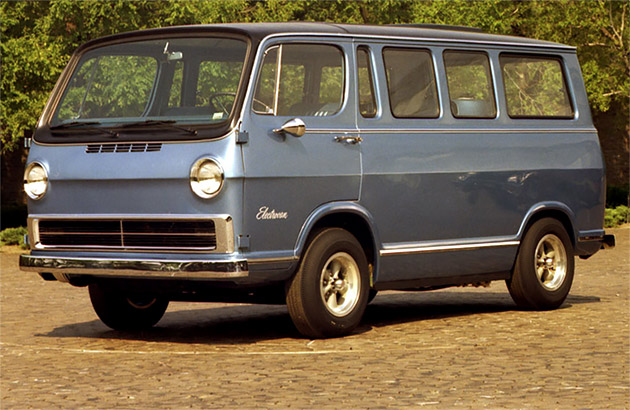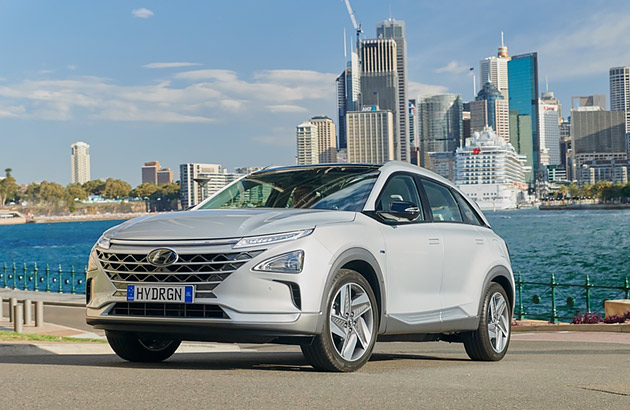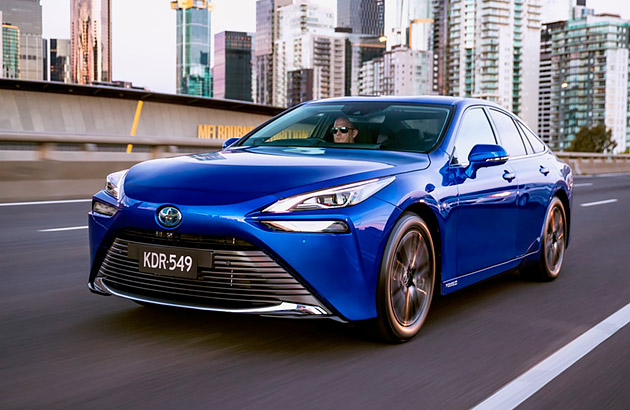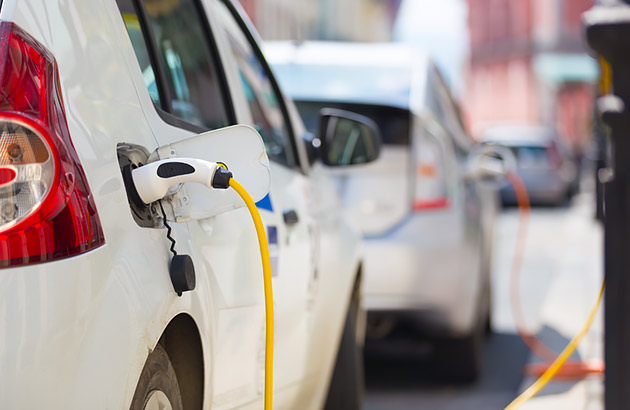22 July, 2021 By: Byron Mathioudakis
After more than a century of total domination in Australia, the internal combustion engine, running on petrol, diesel or LPG, is no longer the only game in town.
In 2021, electric vehicles (EV) are generating a lot of chatter and a lot of excitement. But now hydrogen-powered cars have also entered the conversation, with some experts predicting that hydrogen will eventually power most of our transport needs.
Which begs the question: which is better, EV or hydrogen?
We outline the pros and cons
Different but also one and the same
Whether we’re talking about battery-powered electric vehicles (BEV) or hydrogen-powered Fuel Cell EVs (hydrogen FCEV), both use electricity to drive the car. The difference is how that electricity is supplied.
In a BEV, electricity comes from an external source, namely by plugging into the electricity grid, and is stored in batteries.
In an FCEV, hydrogen is pumped in (either as a gas or in liquid form) via a bowser-like pump, and is stored in a special tank. To power the vehicle, the hydrogen then passes through a fuel-cell membrane that causes a chemical reaction to convert it to electricity, which then either powers the electric motor(s) or is stored in batteries for later use. Clean water is the only waste product.
Ideally, wind and solar energy will make the hydrogen in the first place – something WA is well placed in providing over the next few years.
RELATED:
Owning an electric car »
RELATED:
Understanding hydrogen cars »
Current state of development
Hydrogen FCEVs have been under development for more than half a century.
For example, in 1966, General Motors showed off its Electrovan. It cost millions of dollars, was never commercially available, but showed the potential and promise of hydrogen. Just a few years later, three hydrogen fuel cells were used as the primary source of power for the Apollo spacecraft which landed on the moon.

In the following decades, more carmakers followed suit with similar concepts, but it was Honda which released the world’s first commercially available FCEV, the FCX Clarity, in 2008. Hyundai followed with 2013’s ix35 Fuel Cell, as did Toyota two years after that with the first-generation Mirai.
All were like beta versions of computer software and needed to be leased since they each cost significantly more than similarly sized conventional vehicles.
Low numbers of the Hyundai ix35 and Toyota Mirai had been in Australia as demonstration vehicles since around 2013, however this year Hyundai and Toyota started offering limited public leases on their respective hydrogen FCEVs. More on those later.

Battery electric vehicles on the move
Australia’s first modern BEV was 2012’s Nissan Leaf, followed two years later by the BMW i3. But both were expensive and suffered from limited real-world range – barely cracking 100km in everyday use. And while the Tesla Model S changed that with its 300km-plus capability between recharges, the American sedan cost way over $100,000 in its cheapest form. And since most of the EV infrastructure wasn’t yet in place, charging was challenging and time consuming, making BEVs impractical.
However, by 2019, a second wave of BEVs more than doubled the real-world range of those early Leaf and i3 pioneers. Prices are dropping too, as the lithium-ion battery packs become cheaper to produce due to the sheer economies of scale involved. But their larger battery packs are heavy and charging takes a long time, unless costly fast-charging stations are installed.
On the flipside, BEV infrastructure is mushrooming across Australia, connecting Perth to the southern and eastern seaboard up to Far North Queensland.
RELATED:
Electric cars available in Australia »
More excitingly for BEVs, solid state battery technology is on its way.
Expected to be unveiled sometime within the next 12 months, this is the BEV gamechanger the world seems to be waiting for. Employing cells with a solid electrolyte (rather than a liquid as used in the more conventional lithium-ion cells) which are said to have much greater capacity, they’re also claimed to be less hazardous, more stable, smaller, lighter and best of all, far quicker to recharge.
Toyota is at the solid state forefront, with productionised BEVs expected by the middle of this decade. The way we see it, this technology is set to supercharge the BEV industry in the short to mid-term, while hydrogen FCEV will probably be the long-term future of the EV.
Vehicle comparison costs
Earlier in 2021, Hyundai launched Australia’s first-ever commercially-available hydrogen FCEV to market, in the form of the Nexo – a medium-sized SUV aimed at private and fleet customers. Some 25 are slated for lease.
Toyota, meanwhile, launched the Mirai II soon after, also targeting government and businesses seeking to lower their environmental footprint. Its lease is $1,750 per month over three years including the price of the fuel, totalling $63,000 over a 36-month period before a one-off $2,693 servicing fee is included. There is also a mileage cap of 60,000km. If Toyota were to sell the vehicle outright to consumers, expect the price to be above $90,000.

The catch is that you’ll need to live in or near Melbourne or Canberra, since the only public hydrogen fuelling stations currently available anywhere in Australia are in these cities. But this situation will soon change.
While Hyundai has declined to divulge what the Nexo’s monthly costs are, they are thought to exceed the Mirai II.
Other brands are watching with interest to see how the Nexo and Mirai II fare in Australia, including long-time hydrogen FCEV advocates Honda, Mercedes-Benz, Kia, Peugeot, Opel and Land Rover. None have committed to bringing any of their future models to Australia, however.
In contrast, BEVs are getting more affordable.
One EV, the MG ZS EV, is well under $50,000 drive away, at $44,990, while the Nissan Leaf is $53,190, and the Hyundai Ioniq Electric is $55,600. A Mini Cooper E is around $61,480, then it’s on to a handful of others between $65,000 and $90,000, including history’s bestselling EV (Tesla’s Model 3), the Hyundai Kona Electric, Kia Niro EV and Mazda MX-30e.
Moving on, the Mercedes-Benz’s EQA and the Volvo XC40 Recharge approach $82,800 and $84,000 respectively to drive away, then it’s $150,000-plus to drive away in a Tesla Model S, Mercedes EQC, Audi e-tron or Porsche Taycan.
Expensive compared to ICE equivalents, yes, but at least they’re available to buy, unlike a hydrogen FCEV in Australia.
Charging times, range and running costs
The more money you have, the easier life is with a BEV.
Let’s take charging times. If you use a household plug, the best you can hope for is an overnight charge (Mazda MX-30e – due to its small 35.5kWh battery pack), to upwards of 30 hours-plus for a Tesla, Porsche or Audi with their 90kWh-plus packs.
There are ways around this. Spend around $3,000 on a 7kW home/work charger (known as a wall box) to drop those times to a few hours depending on the car, or use the external and emerging public EV infrastructure that, depending on how powerful they are, can have you on your way with a full charge in as little as 30 minutes, but typically after a one-hour plus visit. The fastest super-powerful chargers are still very rare, so most will require a couple of hours with your vehicle plugged in before it’s full of electricity.
In contrast, a hydrogen FCEV needs between five to 10 minutes. No contest.
As far as BEV range is concerned, the MX-30e is city-focused so will return an average real-world range of 200km, stretching to 500km-plus for the expensive big-battery models like the Porsche Taycan and Model S.
However, if the hype around the solid state BEVs is to be believed, the starting point for them is around 500km, even for the least-expensive versions.
A hydrogen FCEV, meanwhile, can return upwards of 650km between refuels (and don’t forget, they take no more than around 10 minutes to refuel).
For BEVs, the cost of ‘refuelling’ depends on many factors, including battery size and the cents-per-kWh cost of electricity (taking in low or high peak rates).
To refuel a hydrogen car, according to Toyota’s figures, the price per top-up works out to be roughly the same across all fuels at peak-hour rates, or about one-third better for BEVs at lower-peak times – and substantially so if you’re charging with the help of solar panels at home or work. Another BEV bonus.
When talking about maintenance, it is too early to predict how much a hydrogen FCEV is to keep running, but servicing costs are expected to be similar to that of a BEV – which are lower than ICE vehicles due to having fewer moving parts.
In terms of sustainability, the large battery packs in BEVs take a heavy toll on the environment from a mining and production point of view, as well as their end-of-life disposal.
As mentioned earlier, most hydrogen production for future transportation needs will be via wind and solar (currently it relies on natural gas and this is not a renewable energy).

The question of infrastructure
Finally, there’s infrastructure.
BEV charging stations are popping up all the time, while there still isn’t the commitment for hydrogen FCEV infrastructure in Australia – and probably won’t be for the foreseeable future.
Some car companies say that existing petrol/diesel station infrastructure can be converted comparatively easily to include hydrogen tanks, and that has happened elsewhere in the world.
But, for now, unless you live near the hydrogen refuelling facilities in the inner-west of Melbourne or in Canberra, it makes no sense buying a hydrogen FCEV in Australia yet.
All-in-all, then, the future for BEVs is looking very promising, especially with the imminent introduction of solid state batteries, while hydrogen FCEVs are still stuck at the starting block.
However, it is clear that with government infrastructure support, the long-term future of hydrogen shows much potential.
Considering an EV? Get a discount on your car loan interest rate.
Get 0.50% p.a. off your car loan interest rate when you buy an electric vehicle.
T&Cs: Discount applies to fully electric new and used vehicles, excludes Hybrid vehicles. Offer is subject to RAC Finance Lending Terms and Conditions. Fees and charges apply. Australian Credit Licence 387972.
